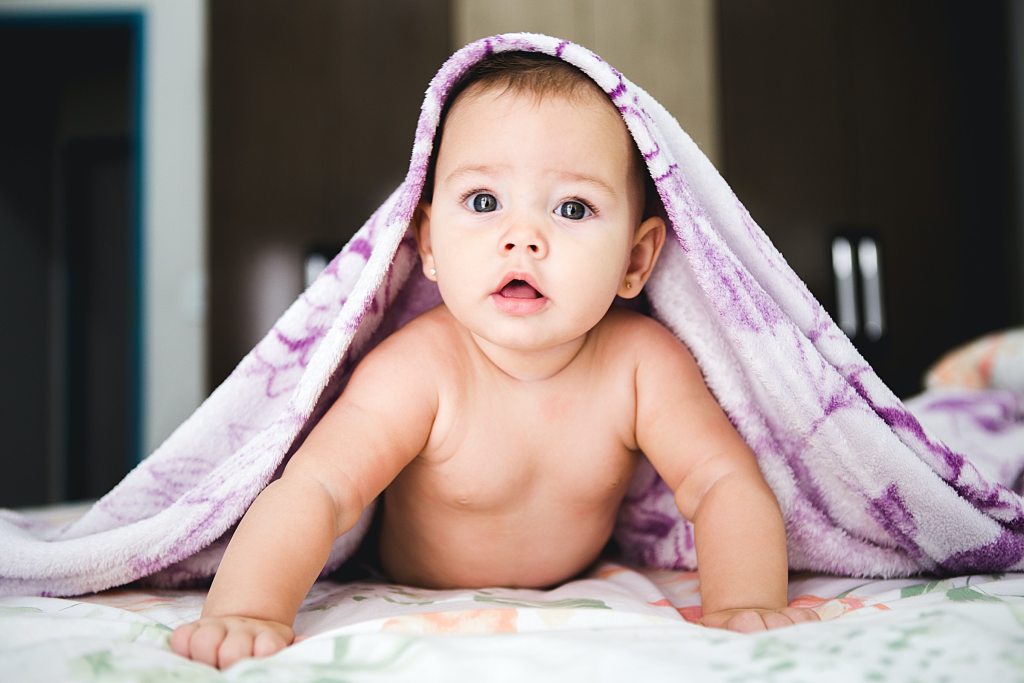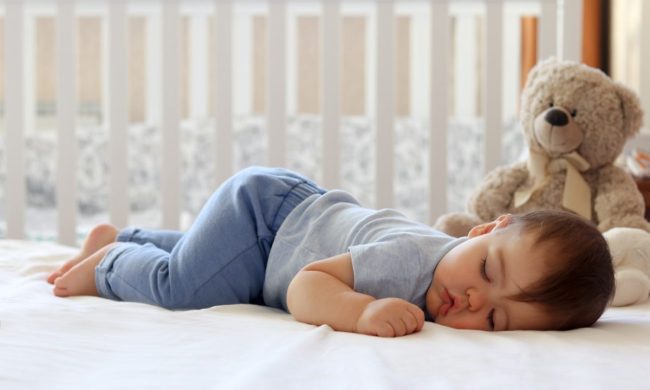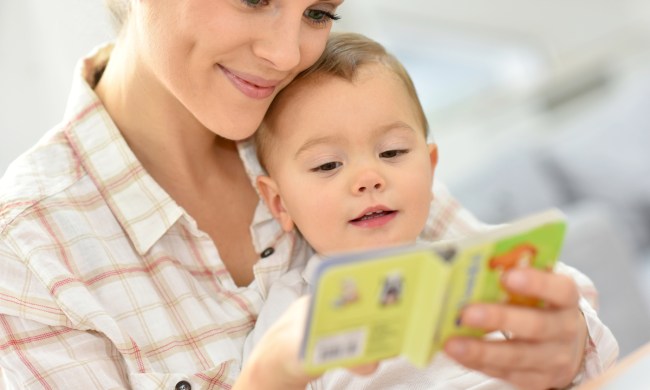When you’re just putting together your first nursery, you may be tempted to deck out your crib area with tons of cute pillows, soft and cozy blankets, stuffed animals, and more, but you could be creating a huge safety risk for your baby. Experts recommend not adding items like these to your baby’s crib until they reach a certain age. Ideally, your baby will sleep in an environment that’s entirely bare, with the only thing on their mattress being a fitted sheet. But your baby can’t sleep on just a sheet forever. When can babies sleep with a blanket and other crib items?
Understanding the risk
Before transitioning your baby to sleeping with a blanket, it’s important to understand the risk involved and the importance of following expert recommendations for your baby’s sleeping area. According to the CDC, about 3,400 babies in the United States die every year from SUID, or sudden unexpected infant death. These deaths occur, most usually, during sleep and in the baby’s sleeping area. The CDC notes that certain precautions taken with your baby’s sleeping area can greatly reduce the chances of SUID. These precautions include placing your baby on their back for any nap or sleeping, only using a firm mattress with a fitted sheet in their crib, and keeping blankets, pillows, bumper pads, and soft toys out of the crib as well.

When can babies sleep with a blanket?
So when is it time to transition your baby to sleeping with a blanket? The American Academy of Pediatrics advises transitioning healthy babies to sleeping with a blanket only after they’re a year old, and ideally only after they’re 18 months old. At that time, you can add a small, thin blanket to your crib, and maybe one soft toy or stuffed animal. You want to avoid adding too much to the crib at one time, as your baby can become easily entangled in extra blankets or pillows, which can lead to suffocation. Additionally, regardless of your child’s age, hold off on adding anything to your baby’s crib if they haven’t yet developed the necessary motor skills to push things away from their face as needed.
What about swaddling?
Swaddling is generally considered okay for newborns and babies that are not quite moving around in their sleep much yet (up to about 2 months of age). This is because swaddling, while technically using a blanket, tucks everything in, in such a way that the fabric can’t cover your child’s face. However, refrain from using a normal blanket over your child’s tucked swaddle blanket and, once your child does start moving around more in their sleep and rolling over, stop swaddling completely.
What if my baby gets cold?
If you’re worried about your baby getting cold at night, you’ll want to dress them warmly before putting them to bed. But don’t worry about this issue too much — it’s likely that you’re worried for no reason. In fact, the ideal sleeping temperature for most infants is around 70 degrees, so a little cooler than you might keep your home normally. A good rule of thumb? If you’re cold after you crawl into bed, your baby might be, too. So, feel the skin around their upper torso and, if it’s cold, you might need to dress your baby more warmly; if it’s warm, you may need to actually remove some of their layers.
Other ways to protect your baby while they sleep
According to the American Academy of Pediatrics, beyond keeping blankets and other soft, loose materials out of your baby’s crib until they reach 18 months of age, there are a few other things you can do to protect your baby during their first year or two of life, including using a firm crib mattress, placing your baby in your bedroom in their crib or bassinet but not co-sleeping with your baby, and using a pacifier. The American Academy of Pediatrics is pretty outspoken about the dangers of co-sleeping, with Rachel Y. Moon, M.D., FAAP, leader of the academy’s task force on SIDS, saying, “Some parents … think if baby is right next to them, they can tell if there is a problem … and protect the baby” — but unfortunately, that’s not the case.
The ABCs of safe sleeping
The academy recommends parents follow the ABCs for safe infant sleeping environments: “A” for alone, “B” for on their back, and “C” for an uncluttered crib. The academy is also quick to point out that babies should never be placed on a couch or pillow for nap time, especially if they’re placed on the couch with another person.
For more tips on infant safety, check out our guides to baby-proofing your furniture and outlets.


